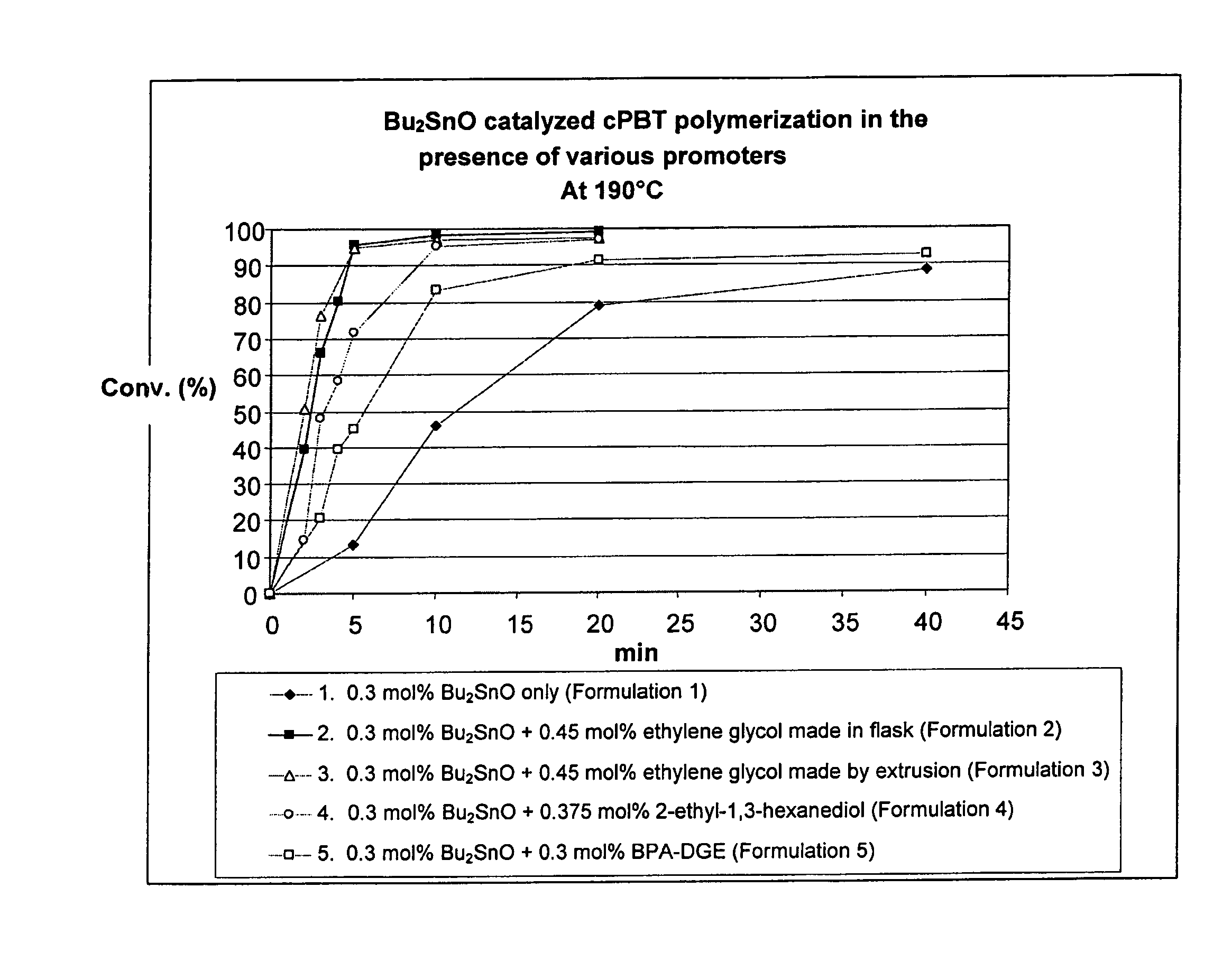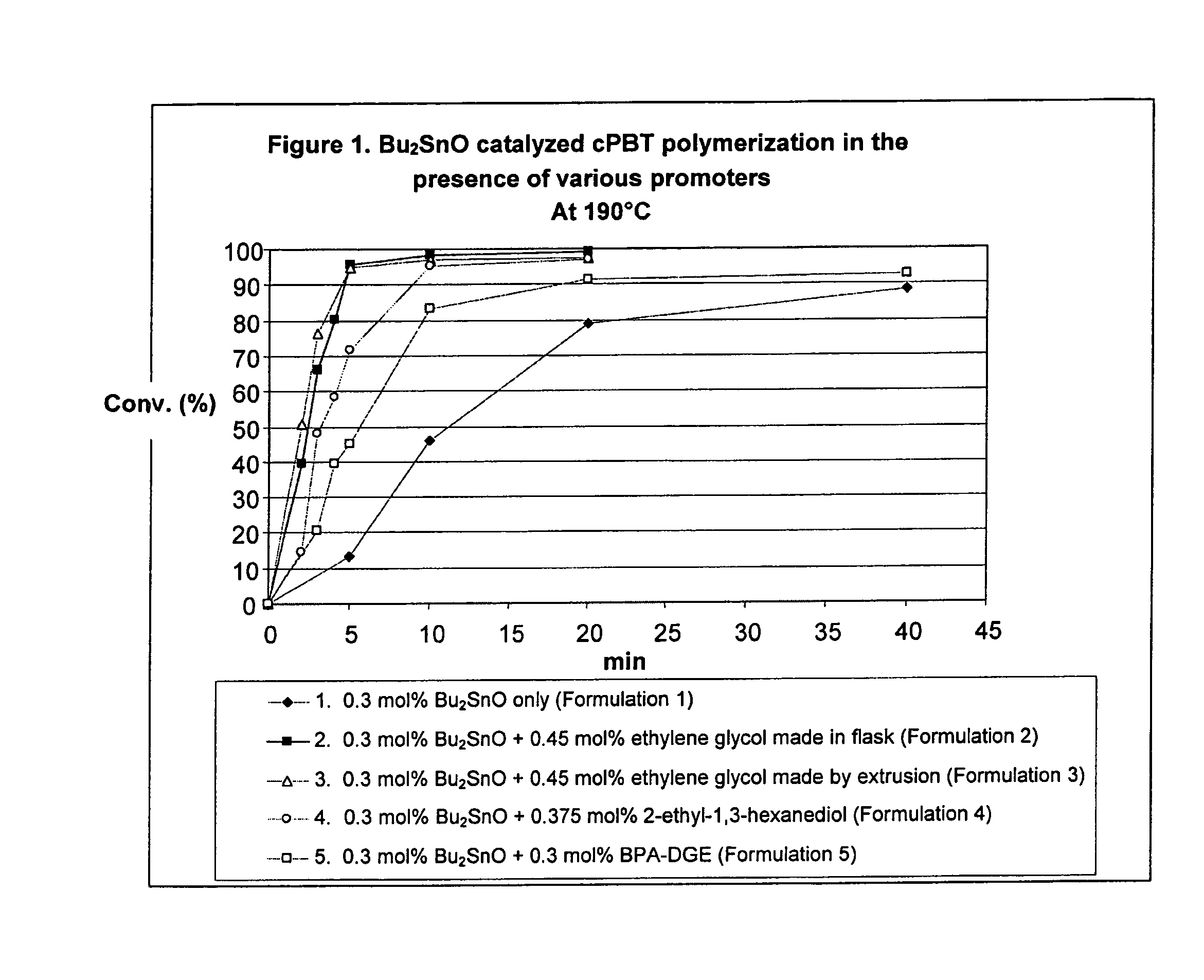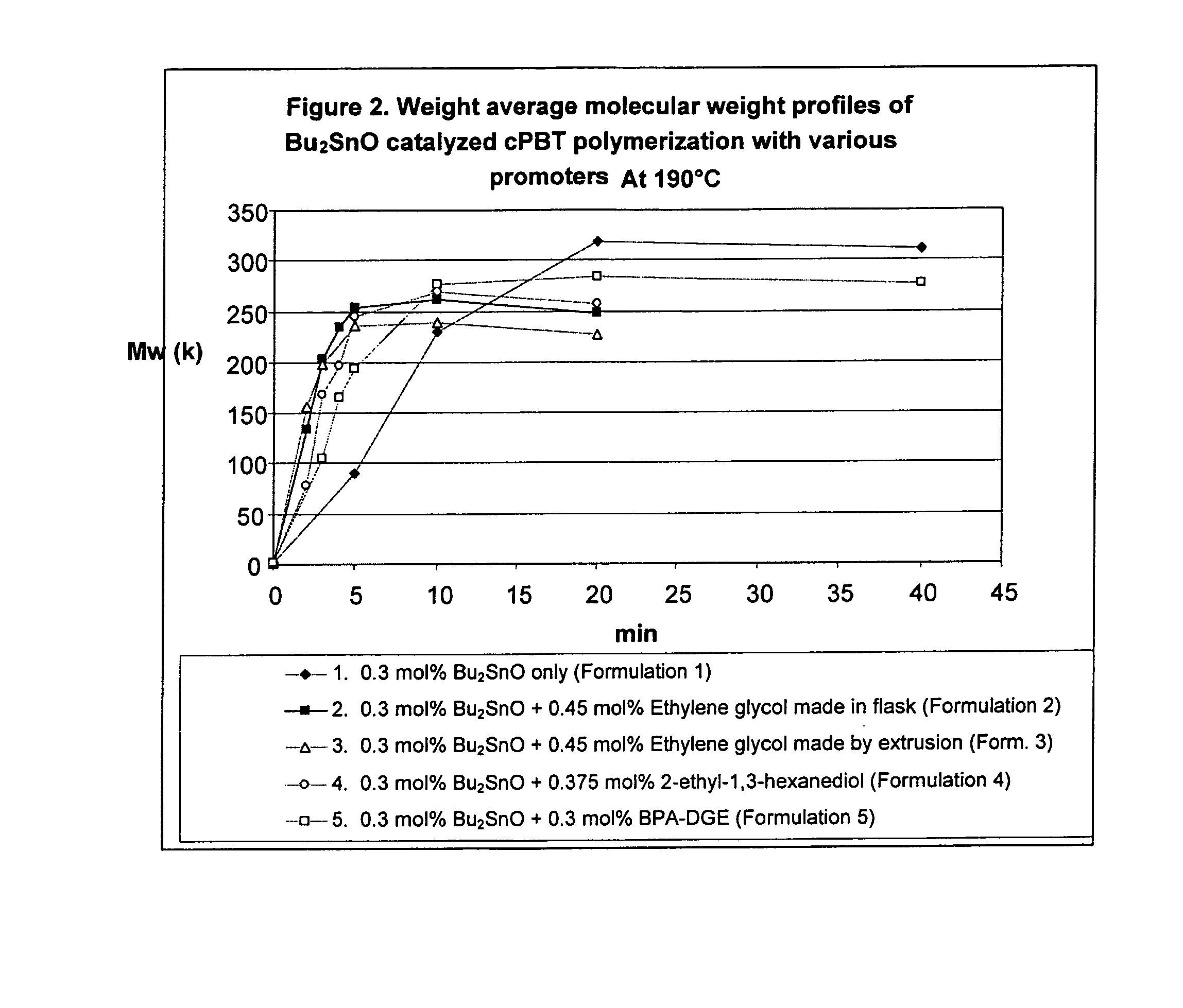Methods for polymerizing macrocyclic polyester oligomers using catalyst promoters
a technology of polyester oligomers and catalyst promoters, which is applied in the direction of physical/chemical process catalysts, synthetic resin layered products, chemical/physical processes, etc., can solve the problems of inability to design industrial polymerization processes that are versatile enough to provide adequate polymerization rates and conversions for the successful manufacture of certain products, and achieves long shelf life and superior processing characteristics.
- Summary
- Abstract
- Description
- Claims
- Application Information
AI Technical Summary
Benefits of technology
Problems solved by technology
Method used
Image
Examples
experimental examples
VI. EXPERIMENTAL EXAMPLES
[0125]The experimental examples demonstrate preparation of exemplary stable, one-part, ready-to-polymerize blends comprising macrocyclic polyester oligomer (MPO), polymerization catalyst, and, in some cases, a promoter. The examples also demonstrate successful polymerization of these one-part, ready-to-polymerize blends, and show how promoters may be used to accelerate polymerization of MPO. The examples also illustrate the feasibility of embodiments described herein in which catalyst and promoter are introduced via separate streams, or are introduced at separate times in a given process.
[0126]Examples 1-16 employ the use of MPO manufactured by Cyclics Corporation of Schenectady, N.Y., that is primarily composed of macrocyclic poly(1,4-butylene terephthalate) oligomer. The MPO used in Examples 1-16 contains about 94 mol. % (1,4-butylene terephthalate) units and about 6 mol. % (2,2′-oxydiethylene terephthalate) units, and is referred to hereinbelow as cPBT, f...
example 1
Formulation 1—Blend Containing cPBT and Bu2SnO (Without Promoter)
[0128]The macrocyclic polyester oligomer cPBT (1.101 g, 5.0 mmol), the organotin compound dibutyltin oxide powder (74.7 mg, 0.30 mmol), and a magnetic stirring bar were placed in a vial which was capped with a septum. The vial contents were blanketed via nitrogen / vacuum cycles through a syringe needle connected to a vacuum / N2 system. The mixture was dried at 90° C. / vac for about 0.5 hr and then briefly melted at 170° C. / vac with stirring. The molten mixture was cooled and annealed at 80° C. for 2 hours to allow for crystallization and then pulverized to a fine powder. 0.100 g of the resulting master batch powder was mixed with 1.900 g of cPBT powder to form a blend containing 0.3 mol % (based on butylene terephthalate monomer repeat units in cPBT) of the catalyst.
example 2
Polymerization of Formulation 1
[0129]Approximately 0.3 g of Formulation 1 described in Example 1 was placed in a culture tube connected to a vacuum / N2 system. The powder was dried at 90° C. / vac for about 0.5 hr and then heated at 190° C. under N2 for various polymerization times. The resulting product was quenched in ice water and then subjected to GPC analysis. The conversion to polymer was 13.2 and 46.0% for 5 and 10 minutes of polymerization time, respectively. Weight average molecular weights were 89,600 and 229,100 g / mol, respectively.
PUM
| Property | Measurement | Unit |
|---|---|---|
| temperature | aaaaa | aaaaa |
| temperature | aaaaa | aaaaa |
| mold temperature | aaaaa | aaaaa |
Abstract
Description
Claims
Application Information
 Login to View More
Login to View More - R&D
- Intellectual Property
- Life Sciences
- Materials
- Tech Scout
- Unparalleled Data Quality
- Higher Quality Content
- 60% Fewer Hallucinations
Browse by: Latest US Patents, China's latest patents, Technical Efficacy Thesaurus, Application Domain, Technology Topic, Popular Technical Reports.
© 2025 PatSnap. All rights reserved.Legal|Privacy policy|Modern Slavery Act Transparency Statement|Sitemap|About US| Contact US: help@patsnap.com



